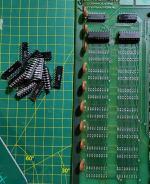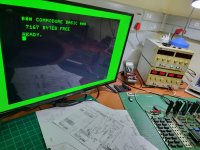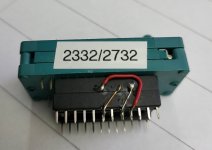Hey, no. This was one of the reasons I pulled the buffers, to see what the RAM does, if isolated from the data bus. It showed high and/or low levels on the various data lines on the RAM side, but these were all stable. Some were high and some were low, which I assume would be expected?Just a thought, if you remove the data buffers between the 2114 RAM and the buffers to the CPU, do you still see the same 'rubbish' data line levels on the RAM pins?
If you do, it is pretty odds-on you have some RAM problems. A NOP generator may be the tool for this though.
Dave
I can definitely plug the NOP gen in and have a look. I'm still learning how the R/W line should behave during various tests and this is a good time to see the effect of the test on the RAM.
For my understanding; The NOP Generator isolates the CPU from the data bus, right? In what state should the data bus be on the board, itself? Will it go to a specific state or can each data line float to wherever it wants to go? What would it look like on the scope?
Follow-up question, would it make sense to pull the data bus either high or low during the NOPs running and observe how that translate through the buffers?
PS. As you might have picked up, I'm using this repair as much to learn about the machine as getting it working.








